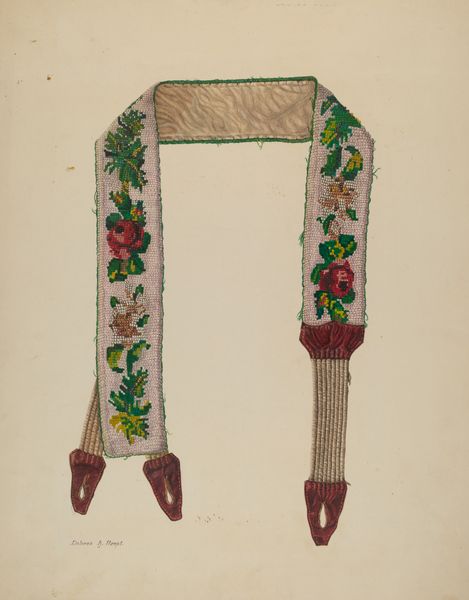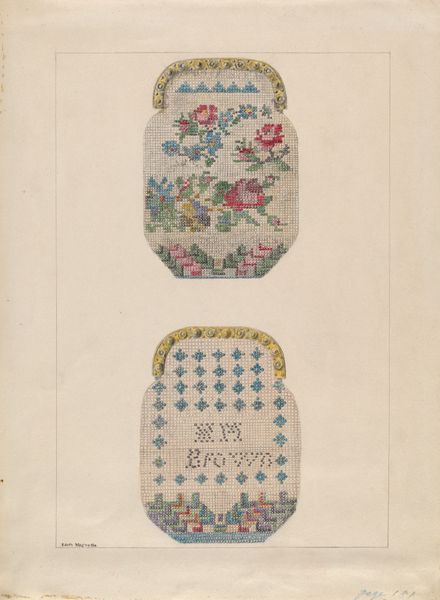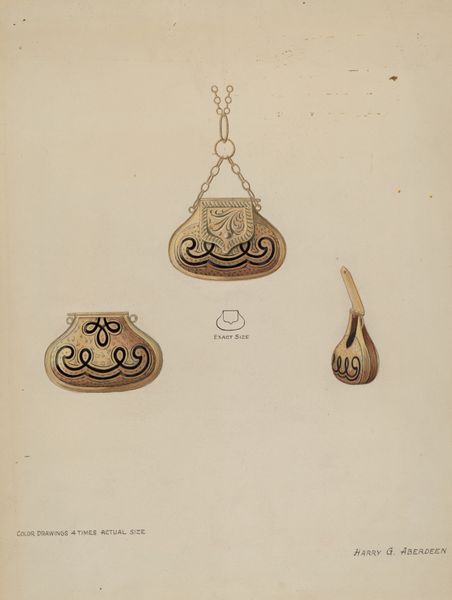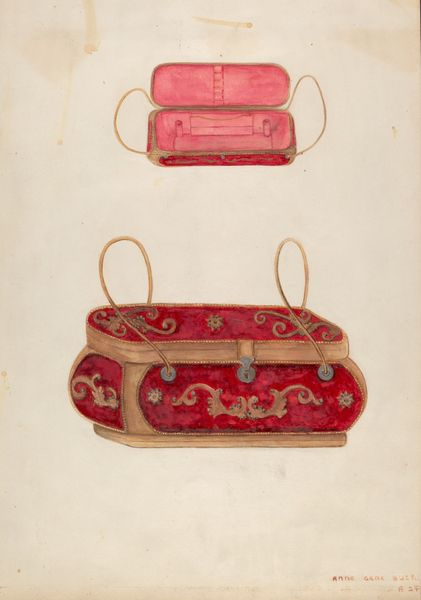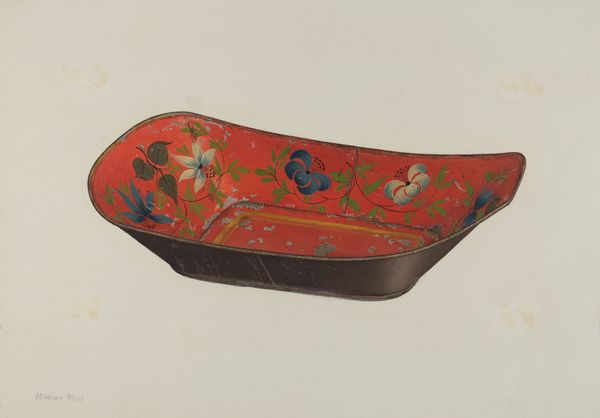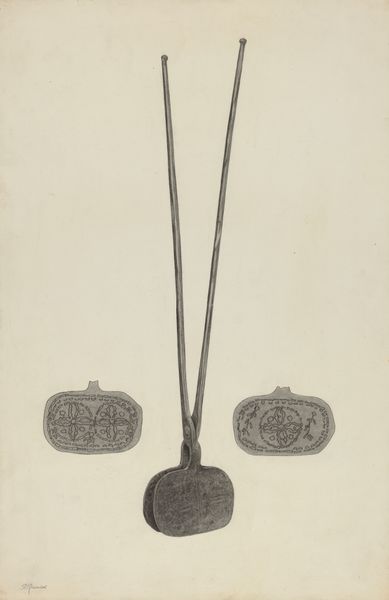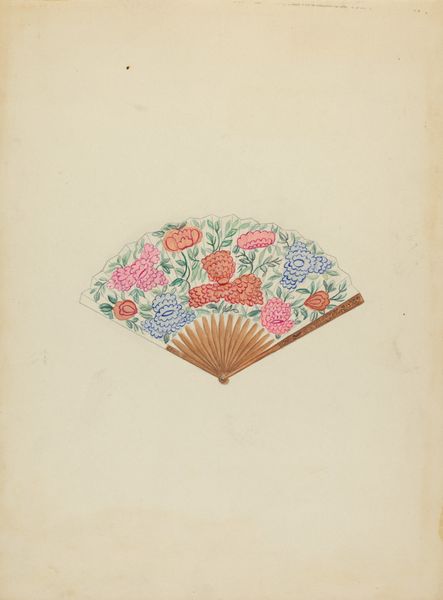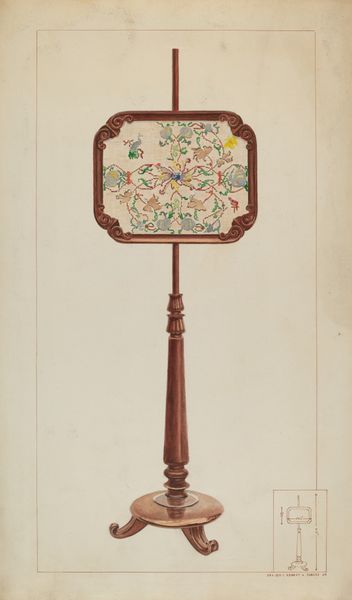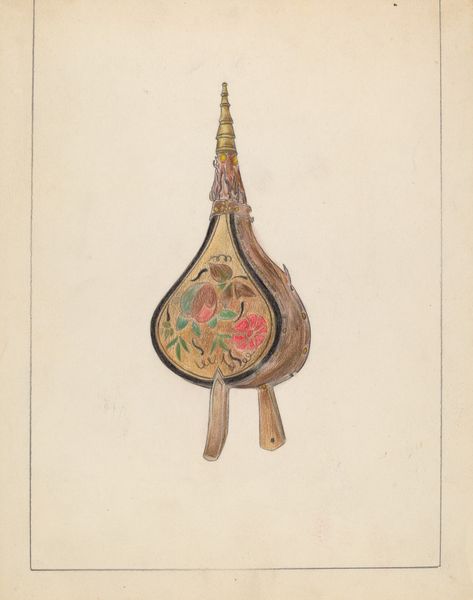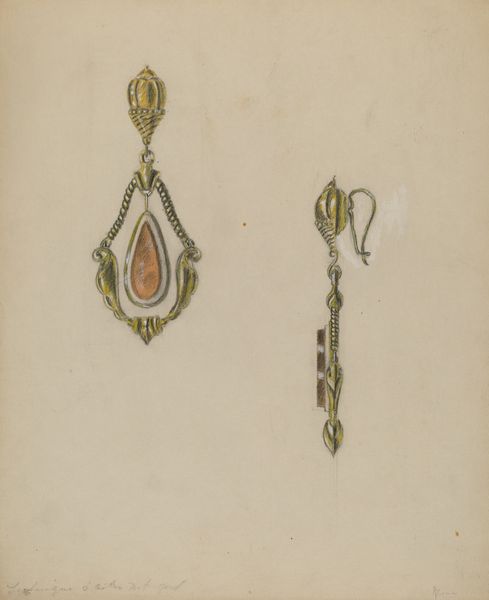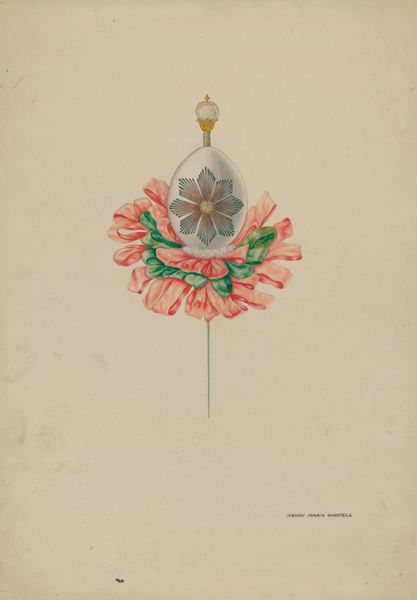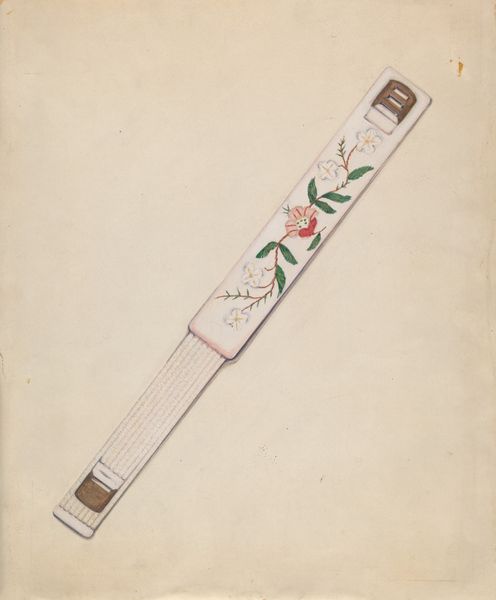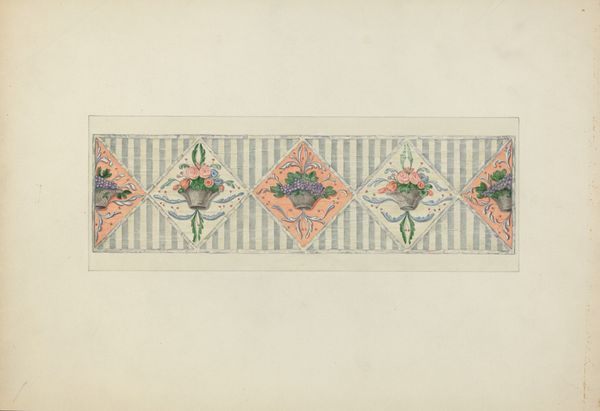
drawing, textile, watercolor
#
drawing
#
textile
#
figuration
#
watercolor
Dimensions: overall: 35.5 x 27.6 cm (14 x 10 7/8 in.)
Copyright: National Gallery of Art: CC0 1.0
Curator: This delicate watercolor drawing depicts "Mission Stole and Maniple" created around 1937. What are your immediate thoughts? Editor: They feel rather demure, don't they? A study in quiet elegance. I'm struck by the contrast between the stark white fabric and the subtle floral embellishments. It’s all so contained, almost austere, despite the hint of color. Curator: Well, considering that these vestments were designed for use in a religious setting, that quietness probably wasn't accidental. Swanson, the artist, understood the gravity imbued into garments of worship, especially with this being related to the Roman Catholic Church. Editor: Which makes me wonder, what sort of social context influenced these particular choices of materiality? Was this fabric sourced locally? Who crafted these items? The design suggests an attention to craft; the stitching alone must have been intensive. Was this a community effort, reflecting labor practices of the time, or the work of a solitary individual? Curator: The artist was involved in the Federal Arts Project, and it reflects a larger moment when American artists were encouraged to create artwork reflecting American life. The stole and maniple themselves hold specific roles within the liturgy, and this depiction speaks volumes about how religious institutions were perceived and presented in art of the period. We see, in many public-facing pieces of art from the era, a romantic view of craftsmanship combined with the solid nature of civic and cultural bodies. Editor: Yes, the intersection between religious iconography and the social messaging promoted through programs like the FAP is something interesting. How the government invested in producing what looks like art to highlight American manufacturing and industry alongside the church itself. Curator: Absolutely, we are able to trace not only the institutional practices, such as the relationship between artists, funding, and artistic expression but also to uncover layers about labor and access to religious symbols. Editor: This piece offers an unexpected lens through which to examine how art, craft, and religion intersect in shaping our historical narrative. Thank you! Curator: Indeed. It provokes valuable thought about the many factors influencing a simple religious illustration, and its enduring commentary on culture.
Comments
No comments
Be the first to comment and join the conversation on the ultimate creative platform.
